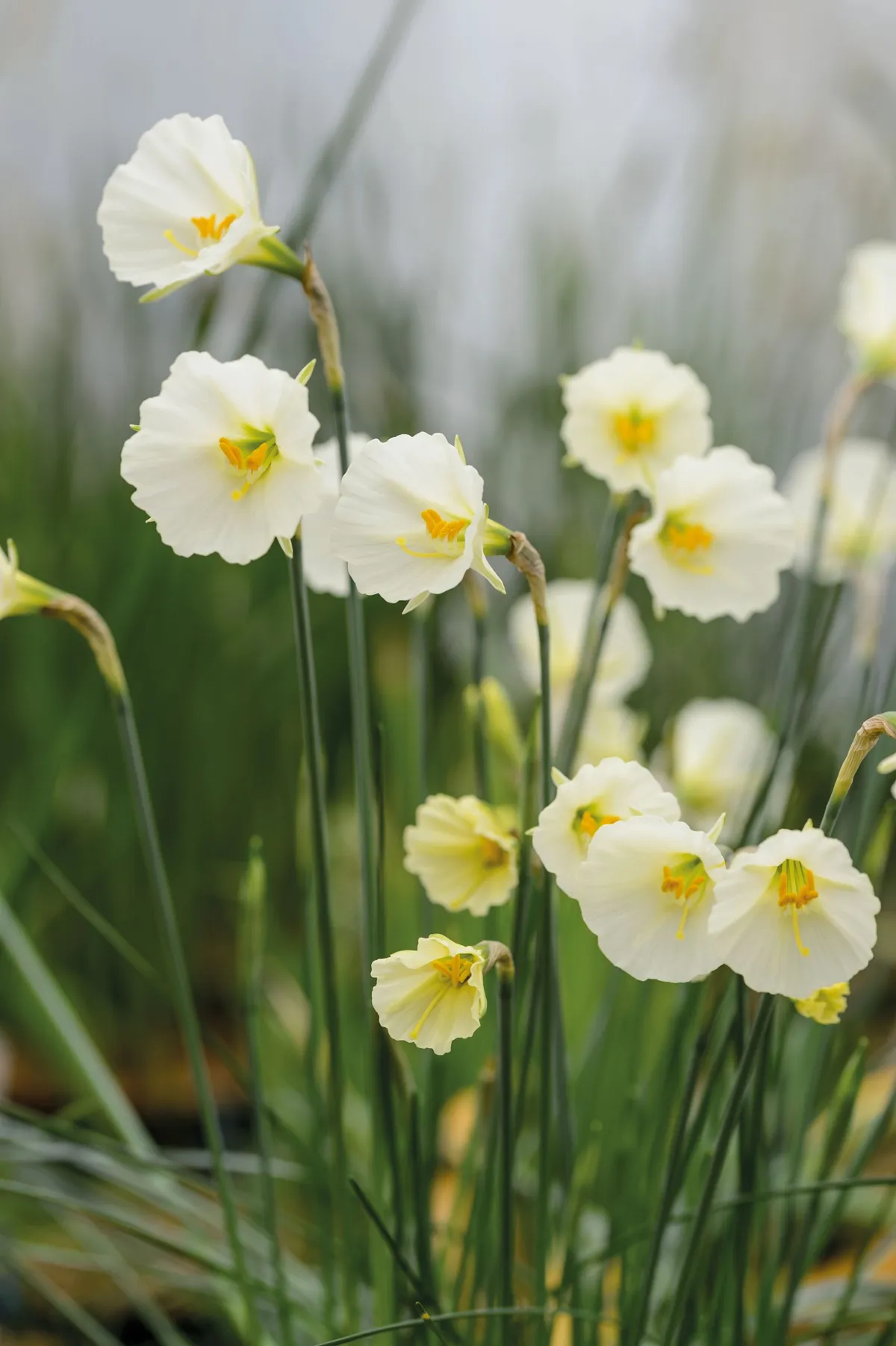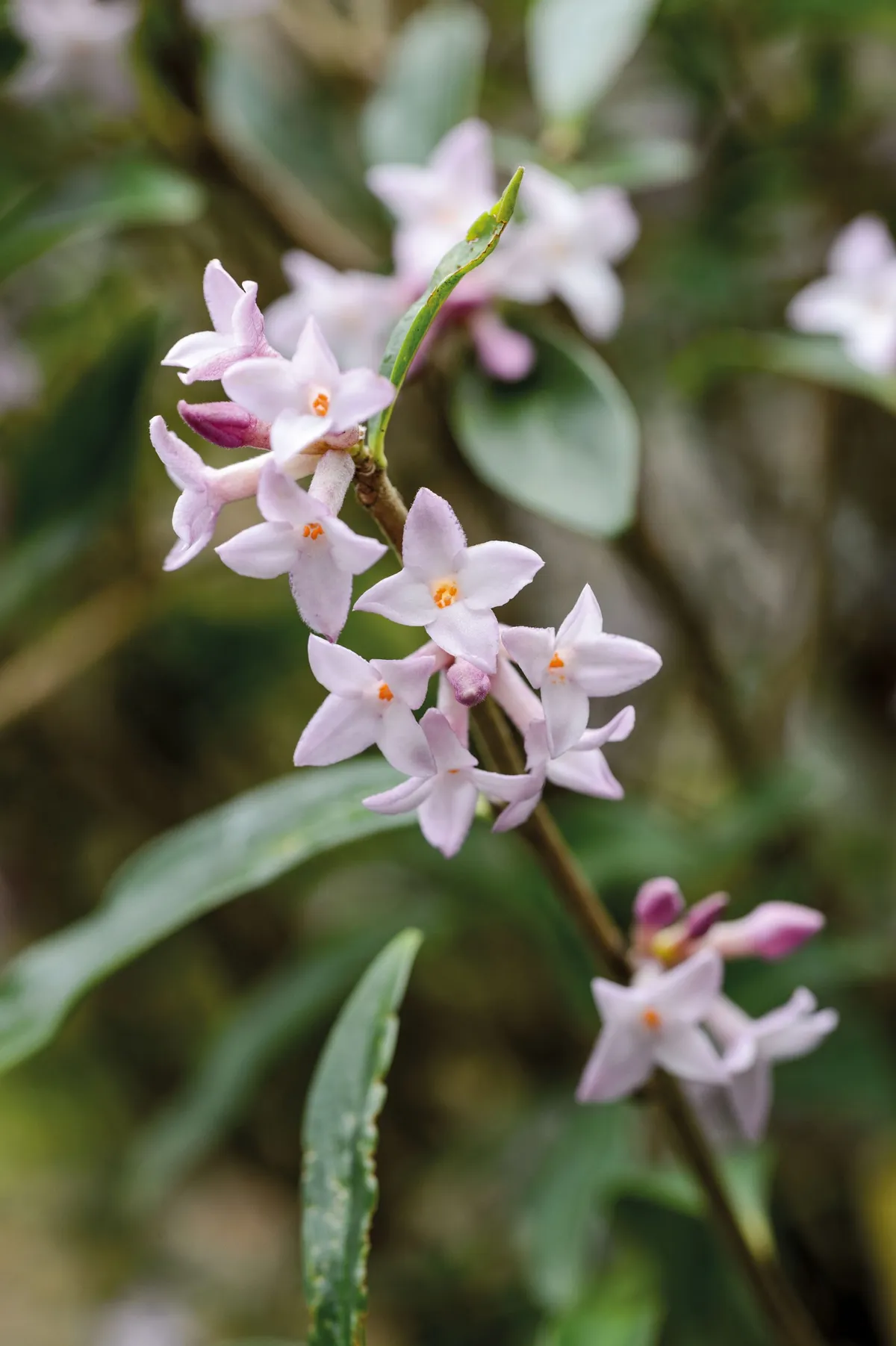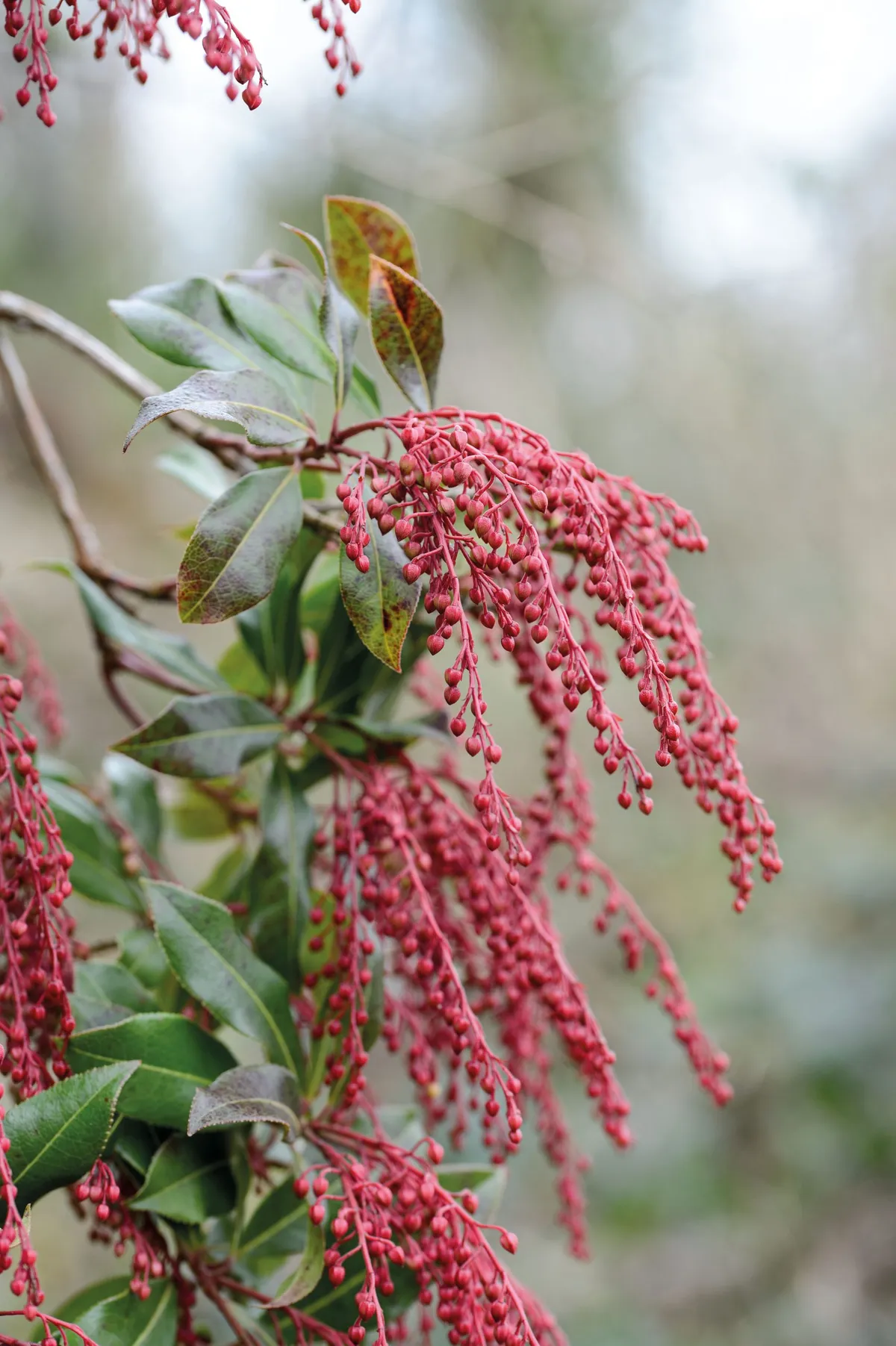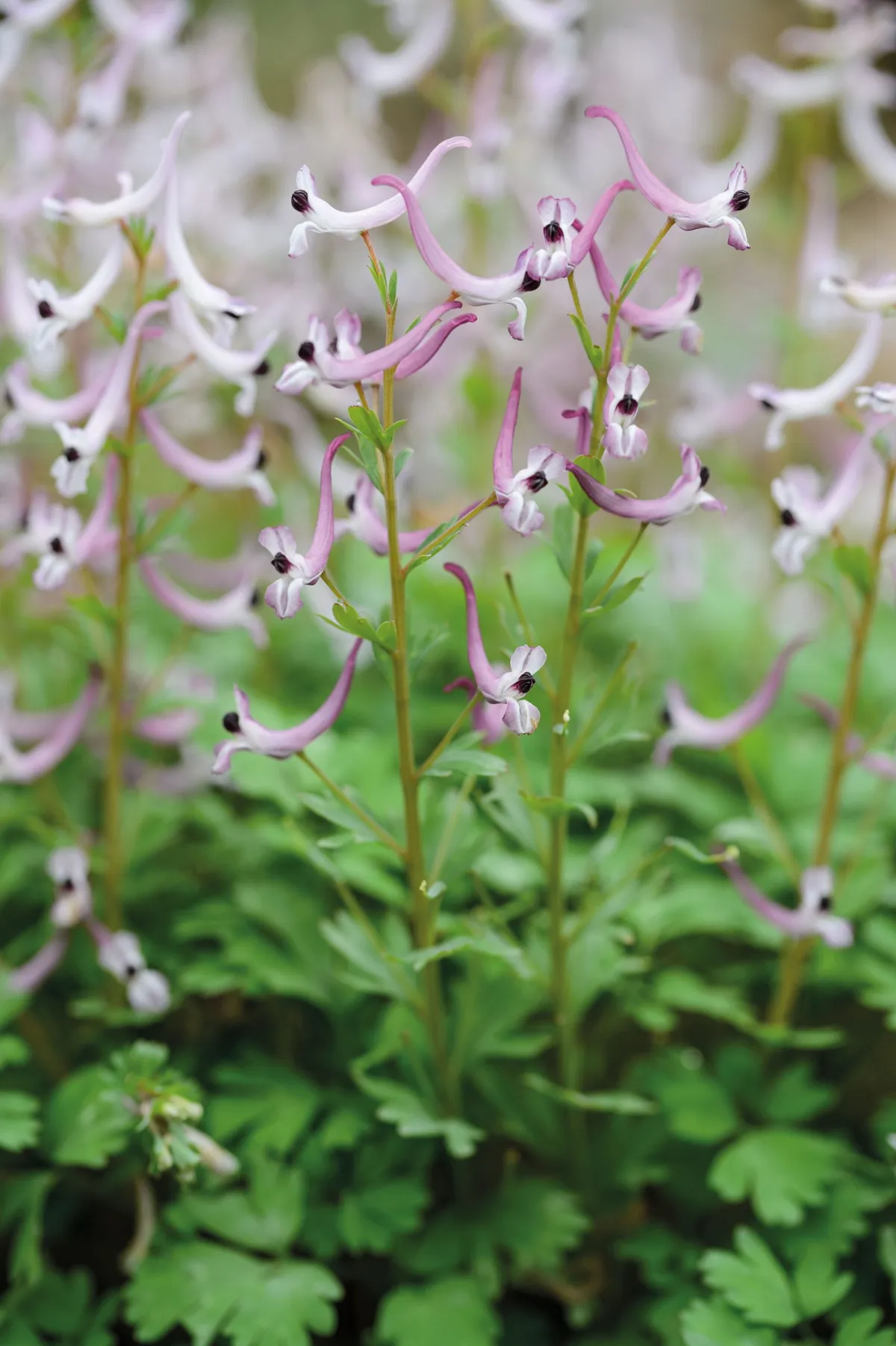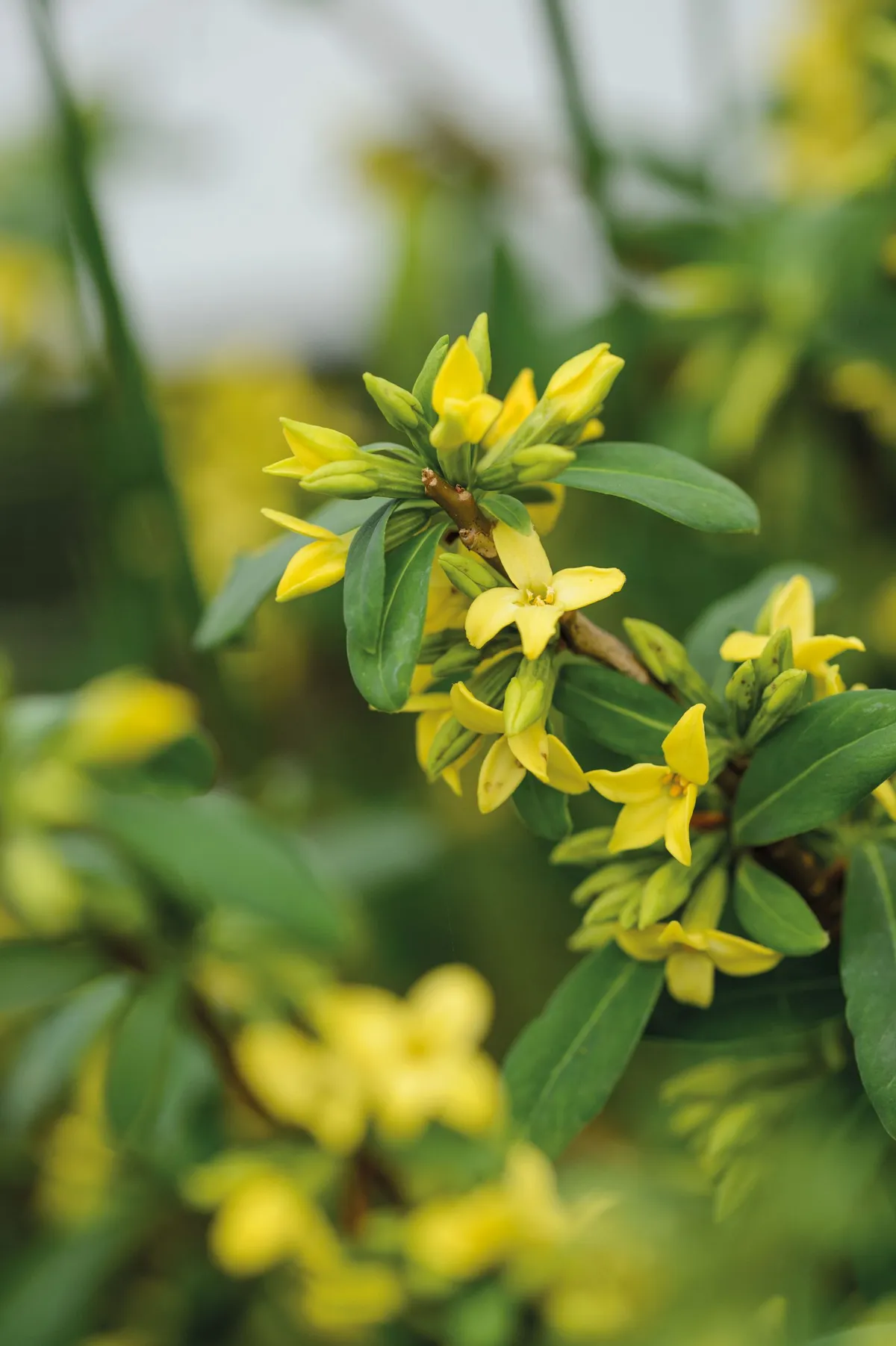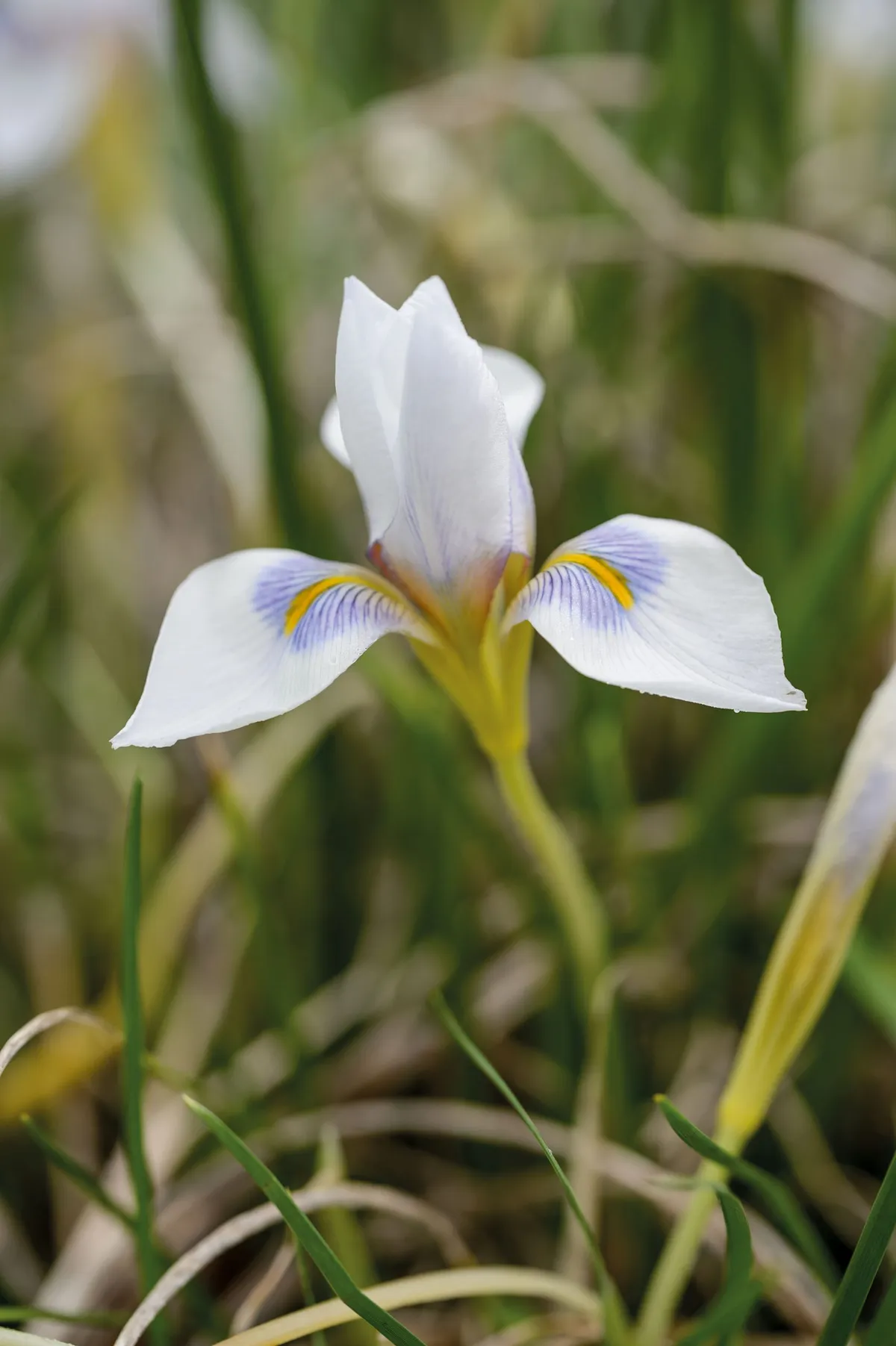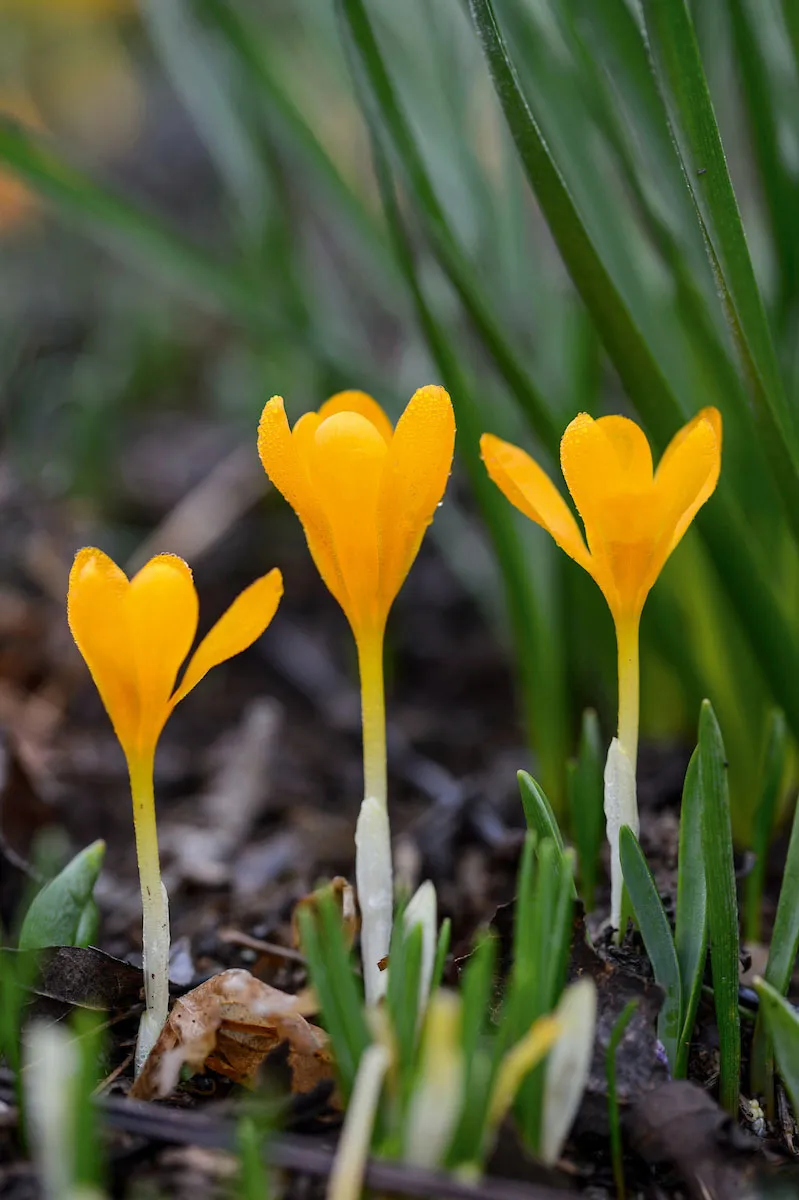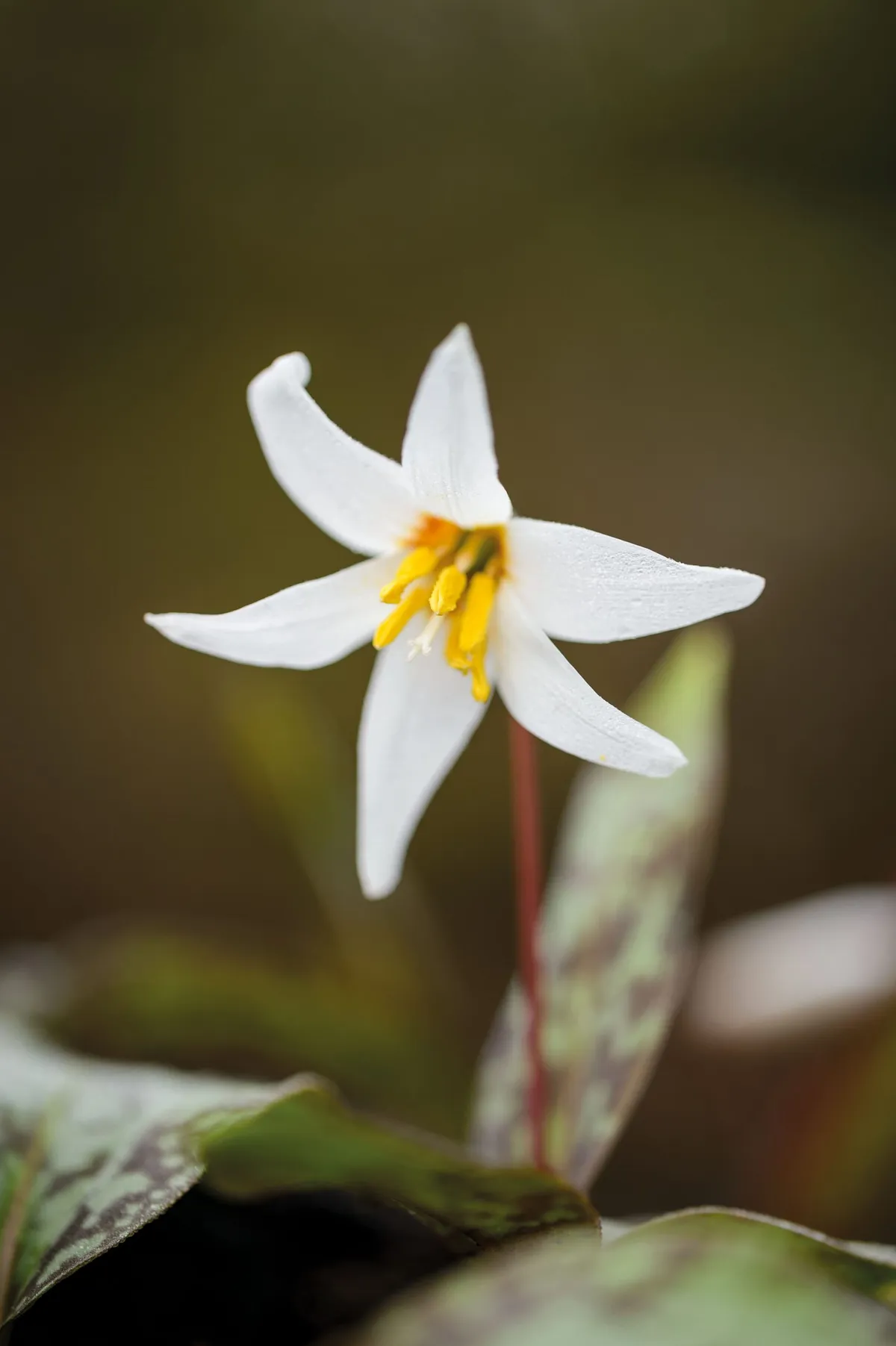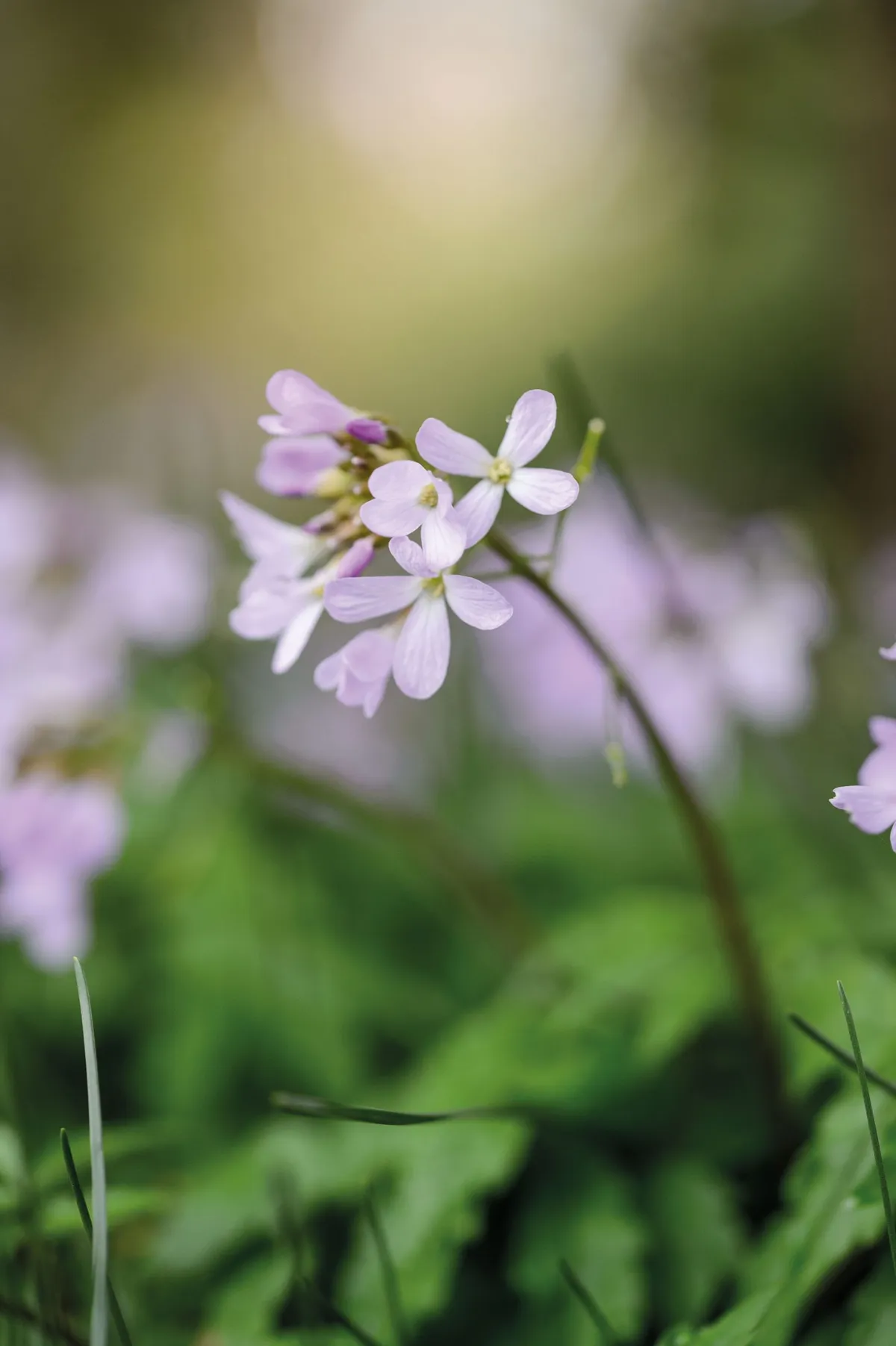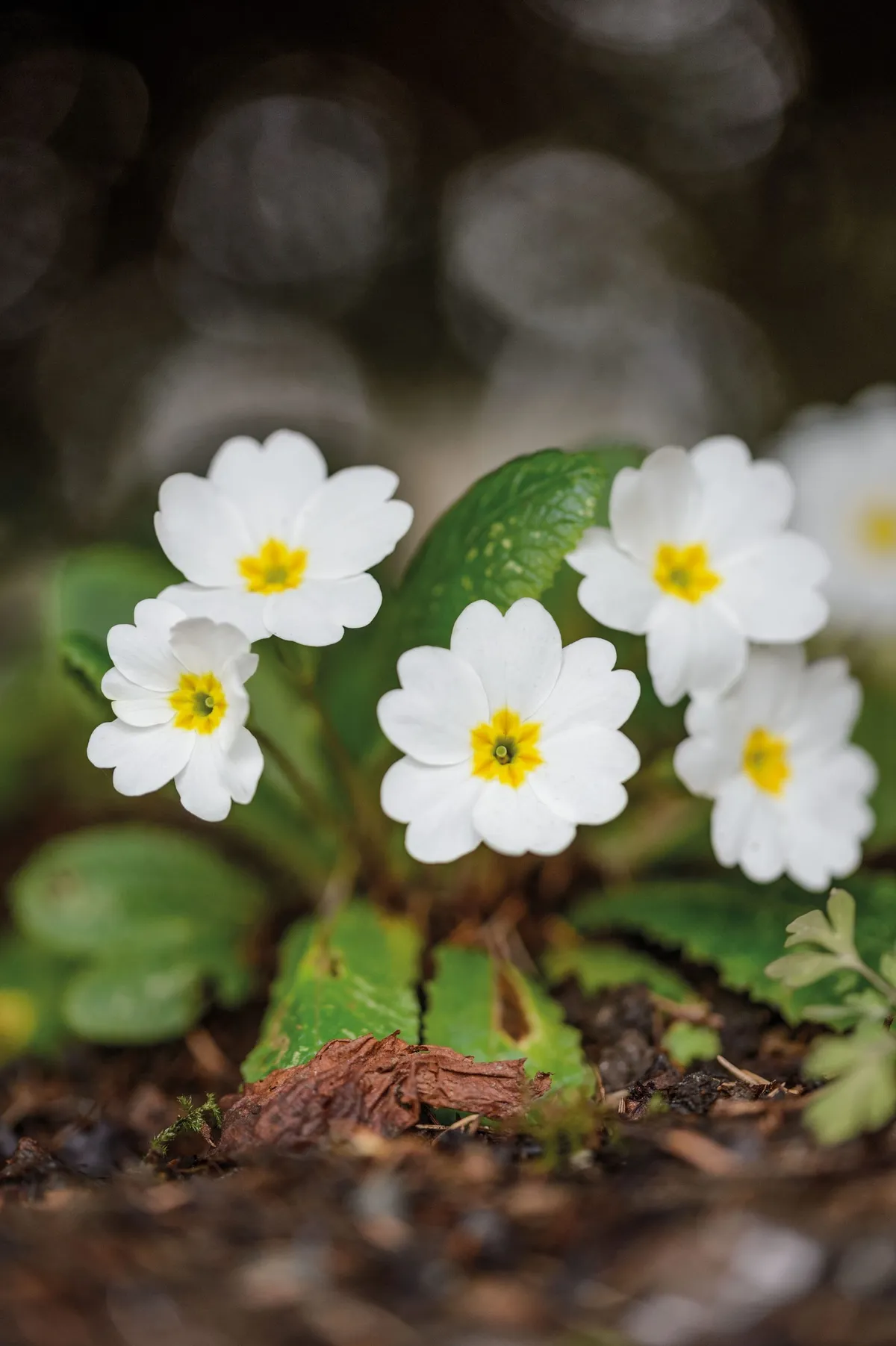February is here. Why not peruse our list of the month's gardening jobs, check out the best gardens to visit in February and here's what to plant this month.
Best February flowers for the garden
February doesn't have to be bare in the garden. If you're unsure about what to enjoy in the garden in February, here plantsmen Keith Wiley and Jimi Blake choose flowers for February which are worth planting to ensure colour and structure.
There's lots to get on top of in the garden too, from pruning, to sowing. Head to our pieces on the best places to buy seeds, to our guides on pruning roses and the general principles of pruning.
The best February flowers for the garden
Epimedium ‘Black Sea’
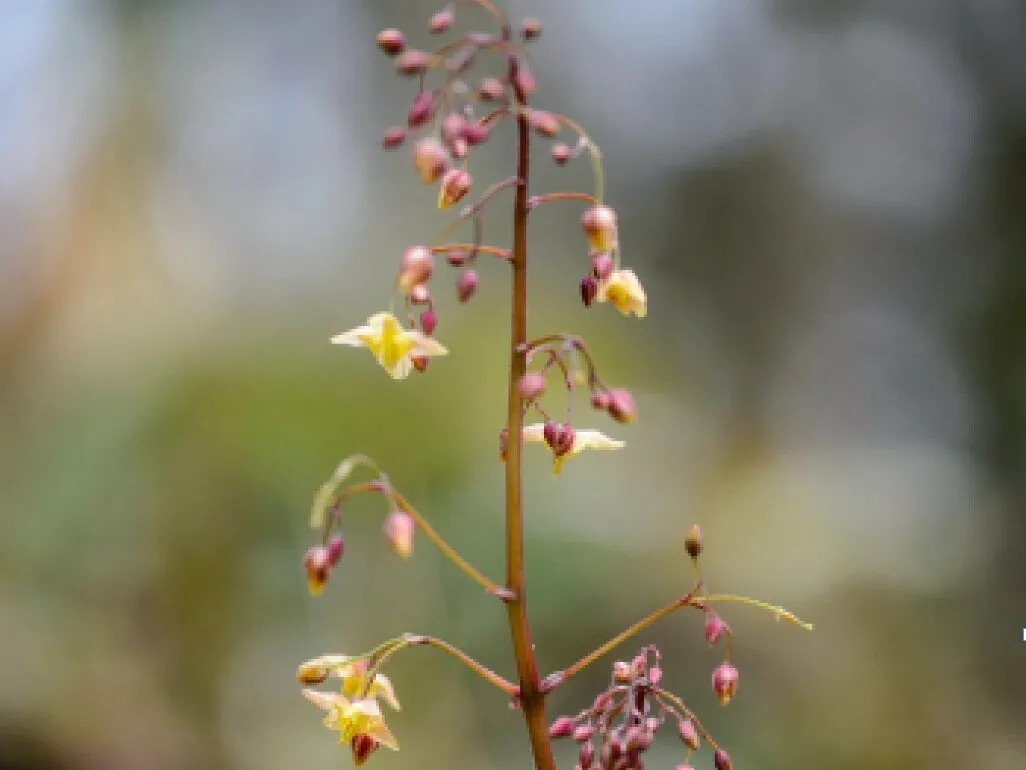
One of the first in my large collection of epimediums to flower, with pale, orange-veined yellow, blooms that emerge in February alongside the snowdrops. The wonderful foliage turns nearly black as the temperatures fall in autumn, extending the season of interest in the woodland bed where it’s planted. I’ve experimented growing epimediums in different areas in the garden and find full sun and rich soil that does not dry out is the best for them. I propagate by division at the end of August and cut back all the leaves in early January before they start putting up flower stems. Jimi Blake
Height 30cm.
Origin Garden (species Transcaucasus and Black Sea coast).
Conditions Rich soil that does not dry out; full sun.
Hardiness RHS H6, USDA 5a-8b†.
Season of interest February to March.
Galanthus 'Veronica Cross'
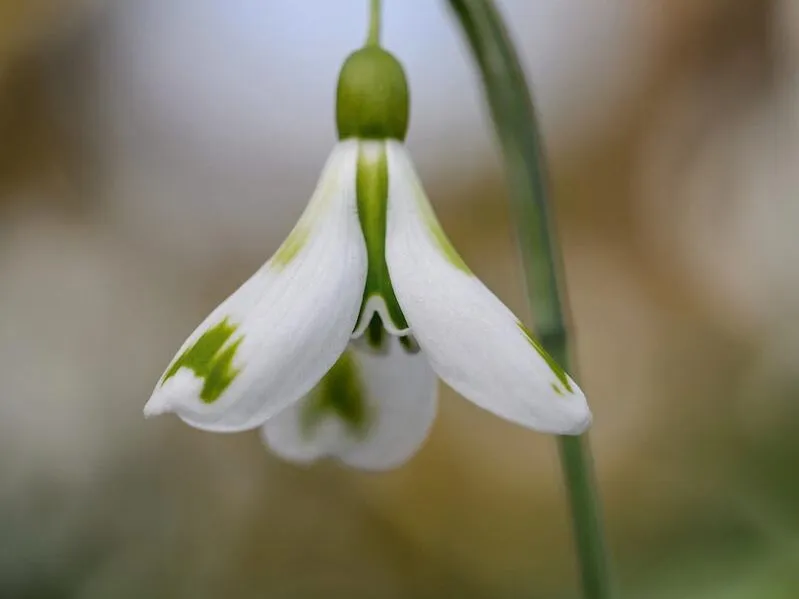
In recent years there have emerged a lot of new snowdrops that have interesting green markings but for me ‘Veronica Cross’ stands out from the rest. It was a chance cross from the Hertfordshire garden of the wonderful plantswoman and galanthophile Veronica Cross, whom I was lucky enough to visit a few times. If you can’t get your hands on Galanthus ‘Veronica Cross’ you must try its parent Galanthus plicatus ‘Trymlet’, which has similar markings and bulks up really fast for me. JB
Height 20cm.
Origin Garden.
Conditions Moist but well-drained soil; dappled shade with some direct sunshine.
Hardiness RHS H5.
Season of interest January to February.
Here's our guide on how to grow snowdrops
Cordyline indivisa
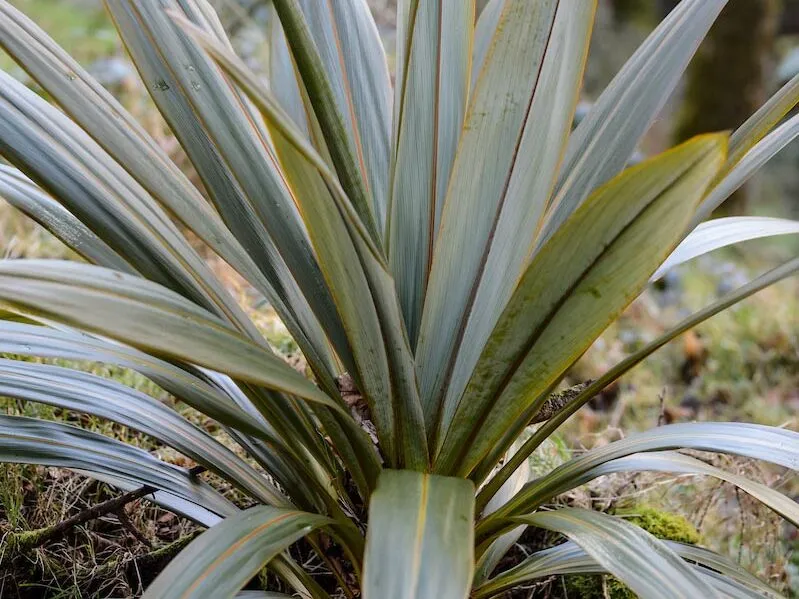
Cordyline indivisa can be tricky to grow but they are as happy as Larry here in the valley at Hunting Brook. I have them repeated throughout the valley giving it an exotic look and evergreen structure all year around. This exotic look is created by their sword-shaped foliage and orange defined midrib in the leaf. They are surprisingly hardy, surviving to -15°C with me in 2010. I propagate them from seeds and keep potting them up to get rapid growth before planting out. I unfortunately never got to see these in the wild when I was in New Zealand, but I dream of being able to do so one day. JB
Height 3m.
Origin New Zealand.
Conditions Moist but well-drained soil; dappled shade.
Hardiness RHS H3, USDA 9a-11.
Season of interest Year round for foliage.
Schefflera delavayi
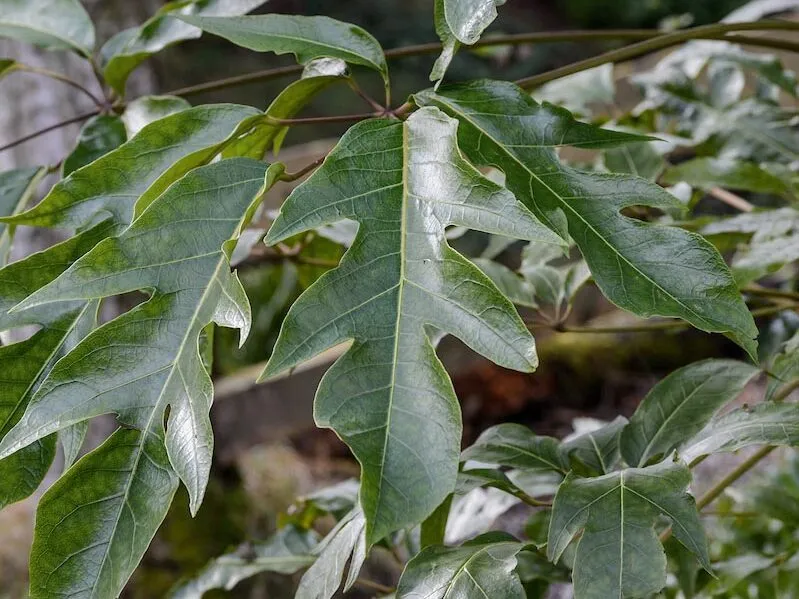
The Araliaceae family is one of my main passions in the plant world and I particularly love the scheffleras, which are among the main plants repeated through the valley here at Hunting Brook. If I had to leave the garden tomorrow and I could take only one plant with me it would be this one. It has a dramatic umbrella-like canopy and has terminal panicles of flowers in autumn. It seems to be totally hardy with me but I did bring it into the glasshouse for the first two winters. I then let it grow and mature before planting out. I adore this plant for its spectacular foliage. JB
Height 3m.
Origin China and Vietnam.
Conditions Well-drained soil and sheltered from cold winds; full sun.
Hardiness RHS H4.
Season of interest Year round.
Cannomois grandis
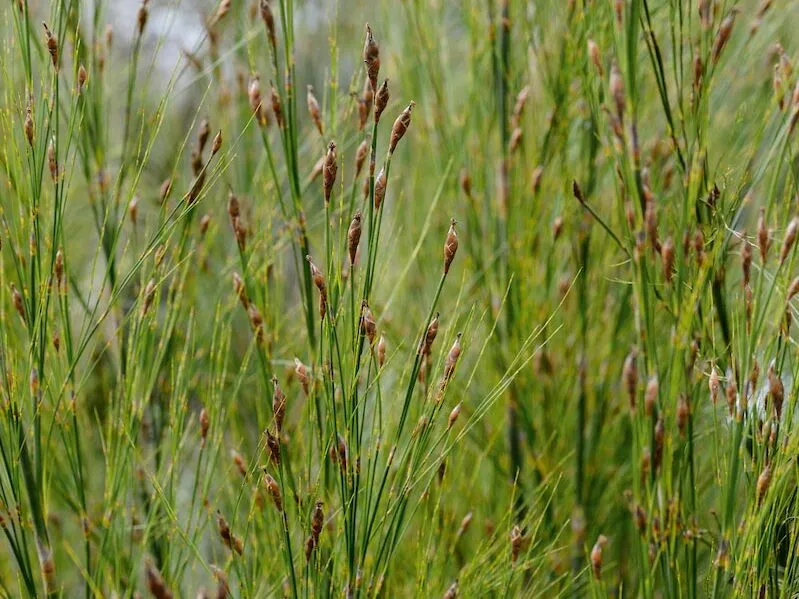
This restio has survived here at Hunting Brook at temperatures as low as -15°C, so I can see its huge potential as a good garden plant. I have it planted in full sun where it has excellent drainage and that has definitely helped it survive. The older the plant the tougher it becomes. I cut untidy stems at the base in spring to keep the plant looking fresh. Restios prefer a neutral to acid soil but if you can’t provide this, grow them in pots of acidic compost. I have just planted a collection of different restios to see which will be the most hardy and also to use them as cut foliage in my flower arrangements. AGM. JB
Height 2.5m.
Origin South Africa.
Conditions Neutral to acid soil with good drainage but not too dry; full sun.
Hardiness RHS H4.
Season of interest Year round.
Daphne bholua 'Mary Rose'
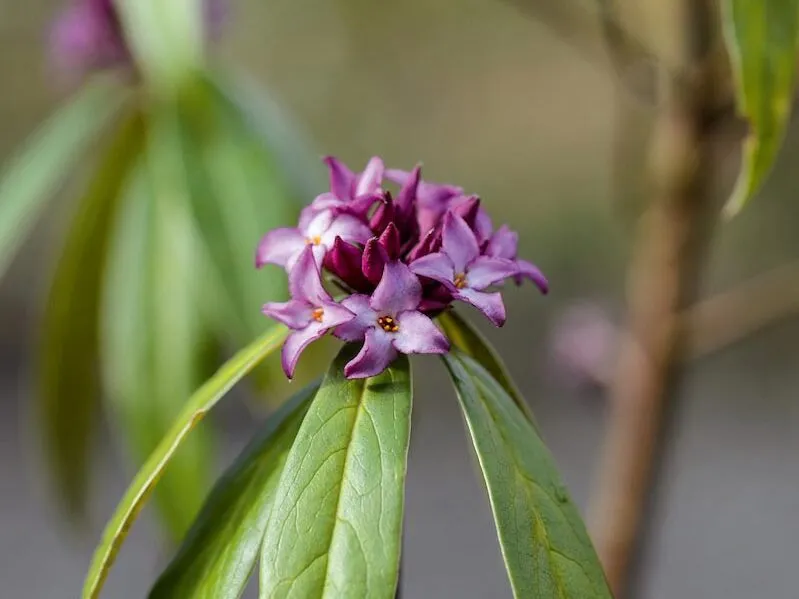
I always make a yearly pilgrimage to Pan-Global Plants in Gloucestershire where I found this absolute gem of a daphne. The deep-purple buds form in December to January and then open to deep-pink flowers in February and March. The flowers have a delicious scent, which I adore on my early morning walks at this time of year. This daphne has an upright growth habit that makes it easy to fit into most gardens. When you’re planting any daphne please remember to plant it where it will stay as all daphnes resent transplanting. JB
Height 2-3m.
Origin Garden (species eastern Himalaya).
Conditions Well-drained soil; sun or semi shade.
Hardiness RHS H4.
Season of interest Winter to early spring.
Helonias thibetica
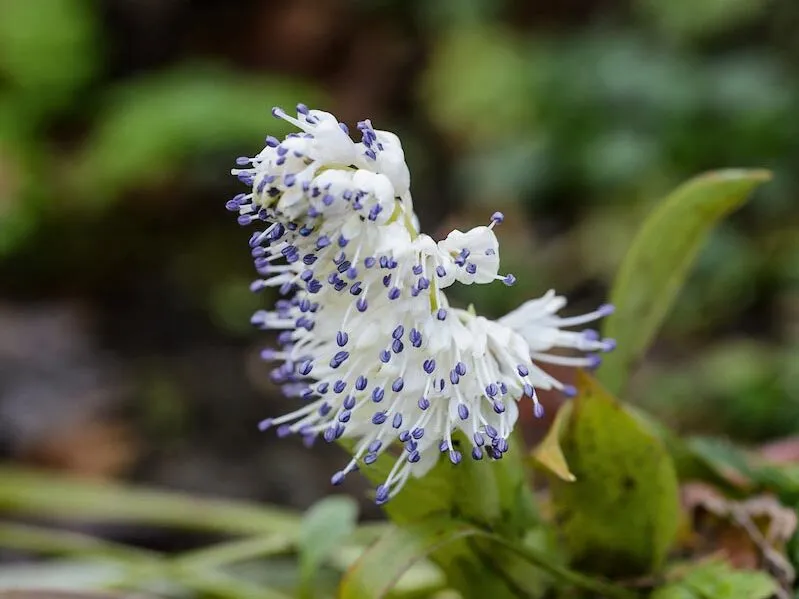
Previously known as Ypsilandra thibetica, this evergreen perennial has fabulously fragrant white flowers with blue anthers growing out of a rosette of foliage. It always flowers around snowdrop time in February and it’s normally when I’m lying on the ground looking at my snowdrops that I really get a good look at this extraordinary flower and take in its beautiful fragrance. It can be propagated by fresh seed surface sown through a layer of grit when seed is ripe in late spring. The early spring plant fairs can be a good place to look for this woodland gem. JB
Height 33cm.
Origin Central and southern China.
Conditions Good woodland soil; dappled shade.
Hardiness RHS H7.
Season of interest Early spring.
Cardamine enneaphyllos
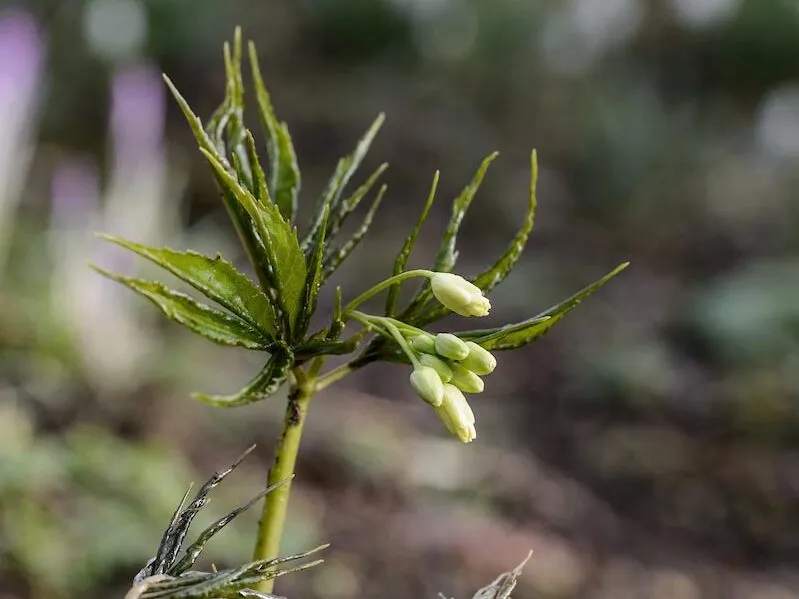
This rather lovely plant with its delicate, nodding yellow flowers is one I originally acquired from the great plantswoman and garden designer Helen Dillon. It now grows in my woodland garden where it has grown extremely slowly but flowers with the snowdrops in the worst of winter weather. When its foliage appears in late January it has a deep reddish-black colour followed by ivory/yellow-coloured pendulous flowers. It’s not a plant that is widely available but I believe any plant that flowers at this time of year is worth sourcing and growing. JB
Height 30cm.
Origin Central Europe.
Conditions Moist but well-drained soil; dappled shade.
Hardiness RHS H7.
Season of interest February to March.
Eranthis hyemalis ‘Noël Ayres’
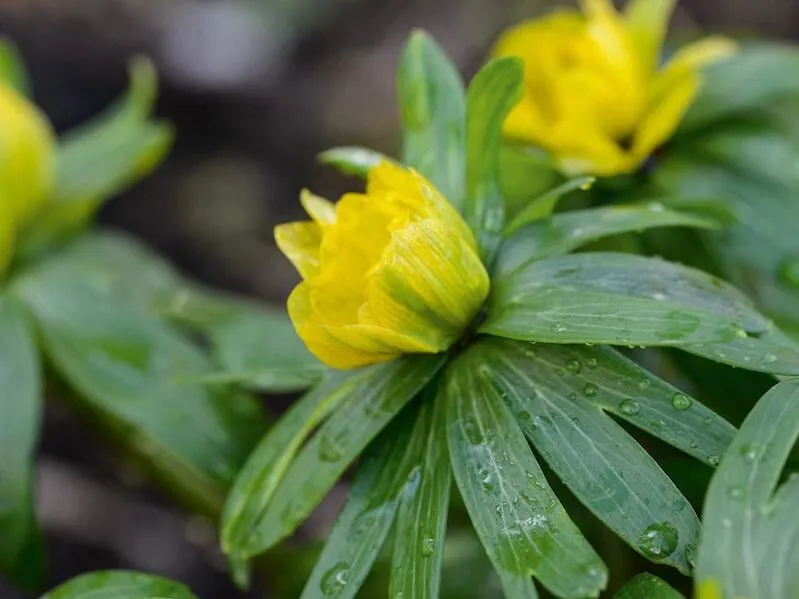
I would collect anything that flowers this early, but I especially love Eranthis for their vibrant yellow flowers at a time when there is so little colour in the garden. This particular cultivar flowers a little later than most others. It bursts into bloom mid to late February with double flowers and outer petals that are more green than yellow. I propagate these by division when the leaves start to turn yellow (after flowering) or from seed sown once ripe. They look good combined with the less vigorous snowdrops and early flowering crocuses. JB
Here's how to grow winter aconites
Height 10cm.
Origin Garden (species western Europe).
Conditions Moisture-retentive soil with good drainage; light shade.
Hardiness RHS H6.
Season of interest Spring.
Chionochloa rubra
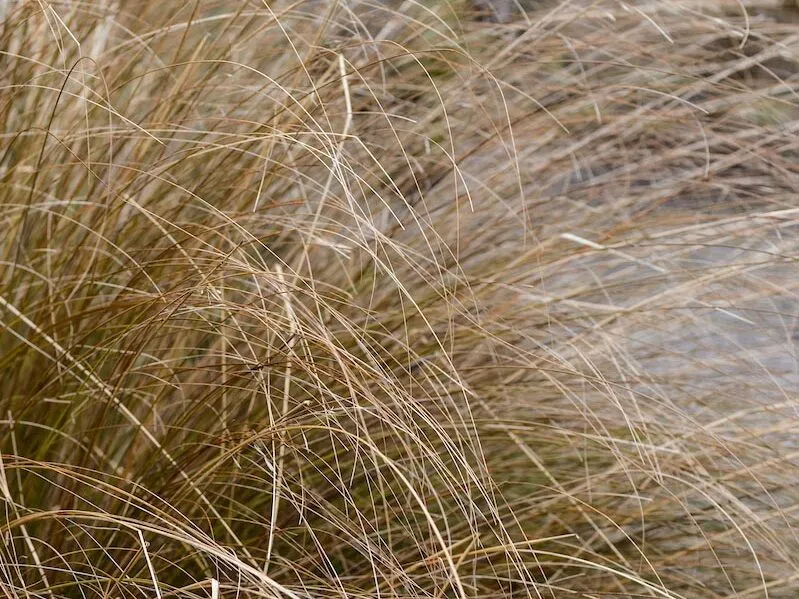
This tufted, evergreen grass, known as red tussock grass has to be beyond any doubt my favourite ornamental grass. I was lucky enough to see Chionochloa rubra growing wild in its native New Zealand where it covered hillsides grazed by sheep. It’s a large grass with a tawny-orange colour and a spray of seedheads in the autumn. This Chionochloa rubra is an extremely low-maintenance grass only needing its old flowering stems removed in spring. I have never been successful propagating it from division but seed propagation is possible in spring. AGM. JB
Height 1.5m.
Origin New Zealand.
Conditions Moist but well-drained, fertile soil; full sun.
Hardiness RHS H7.
Season of interest Year round.
Here's how to grow ornamental grass
Iris unguicularis ‘Peloponnese Snow’
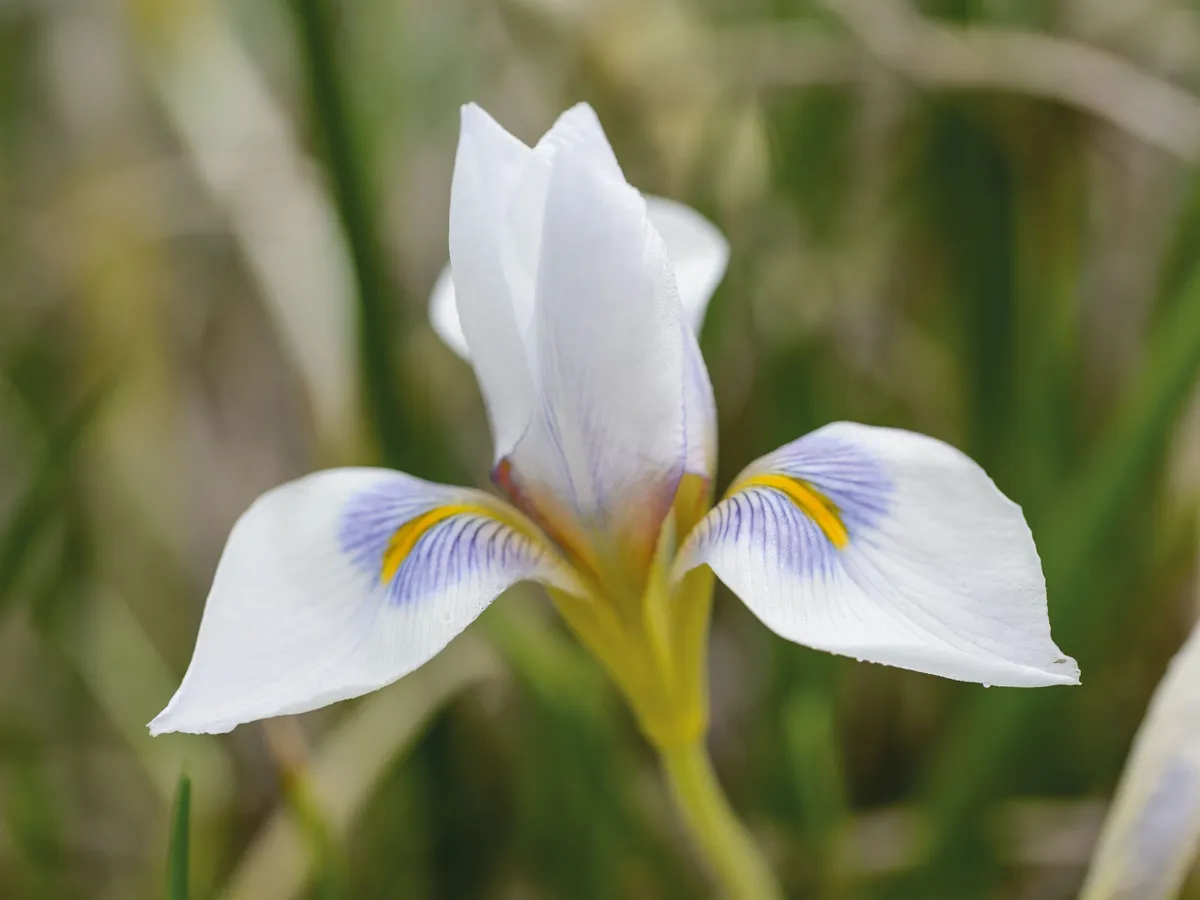
Hardy or near hardy, winter-flowering iris are not thick on the ground, and this one is the standout selection of a species that has filled this gap. The more-often seen cultivars are various shades of lilac-blue, which may or may not have much scent and can be reluctant to produce many flowers. By contrast the beautifully marked white flowers of ‘Peloponnese Snow’ are not only strongly scented but are also produced prolifically for several months. Worth watching out for slugs eating the soft flower stems and flowers. Keith Wiley
Here's more on growing Siberian irises
Height 30-45cm.
Origin Greece.
Conditions Well-drained soil; sun in preferably a sheltered spot.
Hardiness RHS H5, USDA 7a-9b.
Season of interest Evergreen clump flowering winter through spring.
Corydalis henrikii
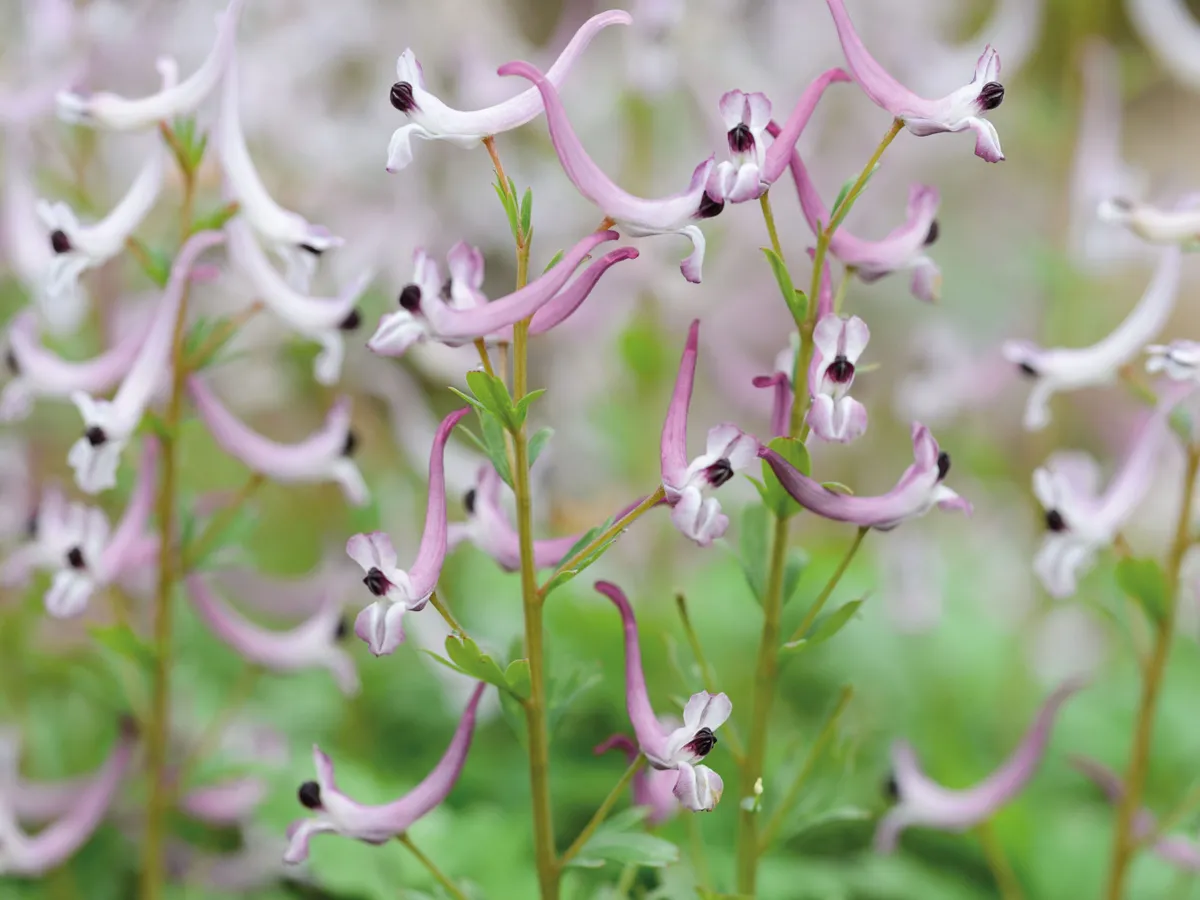
Named after Henrik Zetterlund, of Gothenburg Botanical Garden, who has done so much to bring this genus to the attention of gardeners. This species was found growing on north-facing screes and well-drained limey soils and only named in 1990. Like so many of the genus this one merits close inspection. It will not shout out its presence from its lowly stature, but grow it with the smaller snowdrops, early species crocus and Iris reticulata and a jewel-like tapestry will emerge. A spring ephemeral for a raised bed or rockery retreating below ground soon after flowering. KW
Height 15-20cm in flower.
Origin Turkey.
Conditions Well-drained soil; sun or shade.
Hardiness RHS H6, USDA 5a-8b.
Season of interest Late winter to early spring.
Corydalis: how to care for and plant, plus the best garden corydalis
Daphne ‘Spring Beauty’
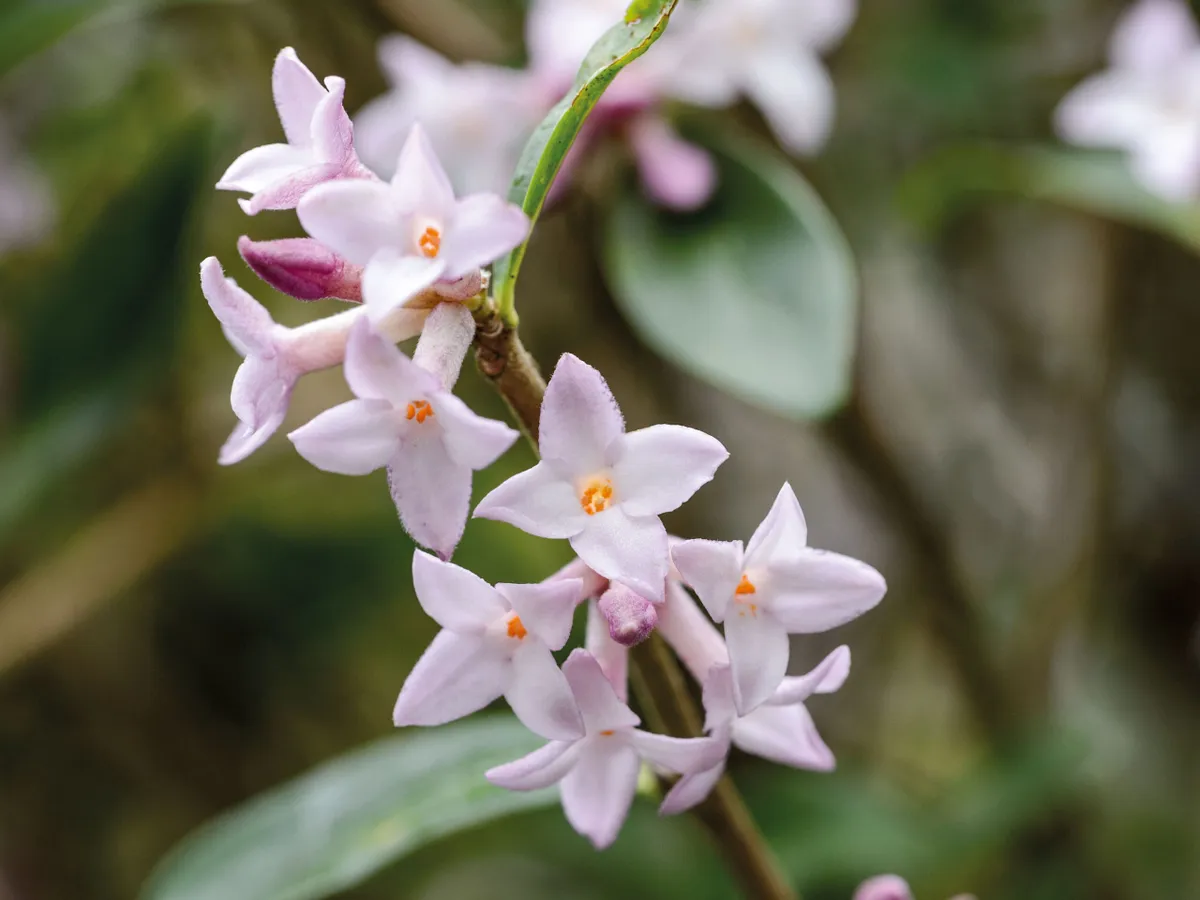
Purely in terms of scent the best species of late winter-flowering daphnes are Daphne bholua and Daphne odora. With less fragrance, but greater flower power, this cultivar (bred by Robin White) is a hybrid between Daphne bholua and the supposedly tender Daphne sureil, which ensures it is later flowering and produces masses of pink flowers. Best planted where the morning sun will not reach it while the plant is still frozen after a cold night. Has proved hardy here at Wildside, which is similar to much of southern England. KW
Height 2m.
Origin Garden origin (both parents are Himalayan).
Conditions Fertile, well-drained soil; sun or part shade.
Hardiness RHS H4, USDA 7a-8b.
Season of interest Evergreen shrub flowering late winter to early spring.
The best daphne for year-round colour and scent
Crocus Thirkeanus
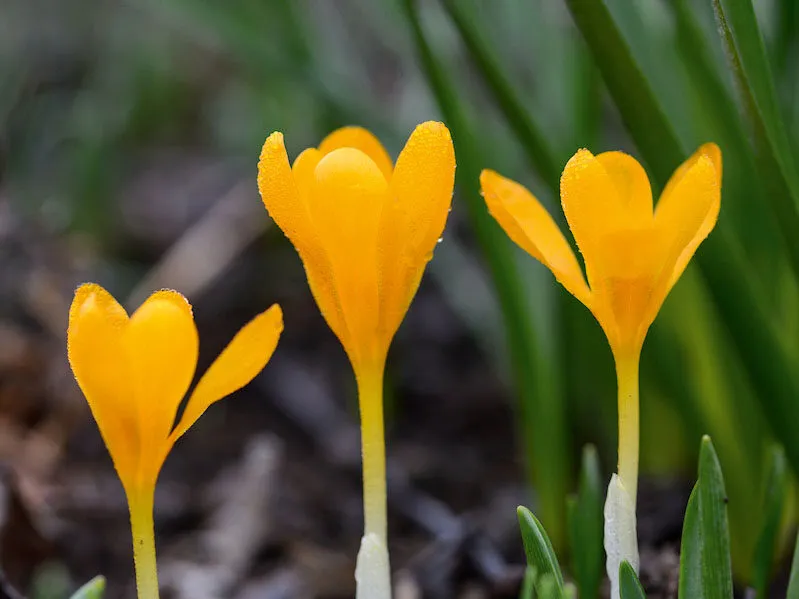
Formerly known as Crocus herbertii, this is wonderful growing alongside Corydalis henrikii (see above) and one of my highlights among the winter flowering bulbs. The most intense orange flowers spring from the smallest crocus bulbs I have ever seen. It is a stoloniferous species spreading by underground stems to produce an ever increasing colony of small, grassy leaves when settled, which in my experience can take several years to happen. Seeing these spears of orange emerge so early in the year is a thrill of which I will never tire. Does need small companions, I grow it with low-growing, early grape hyacinths and some of the smaller snowdrops. KW
Height 10cm.
Origin Turkey.
Conditions Well-drained soil; sun.
Hardiness RHS H7, USDA 3a-8b.
Season of interest Late winter.
Crocus: how to plant, grow and care for crocus
Daphne jezoensis
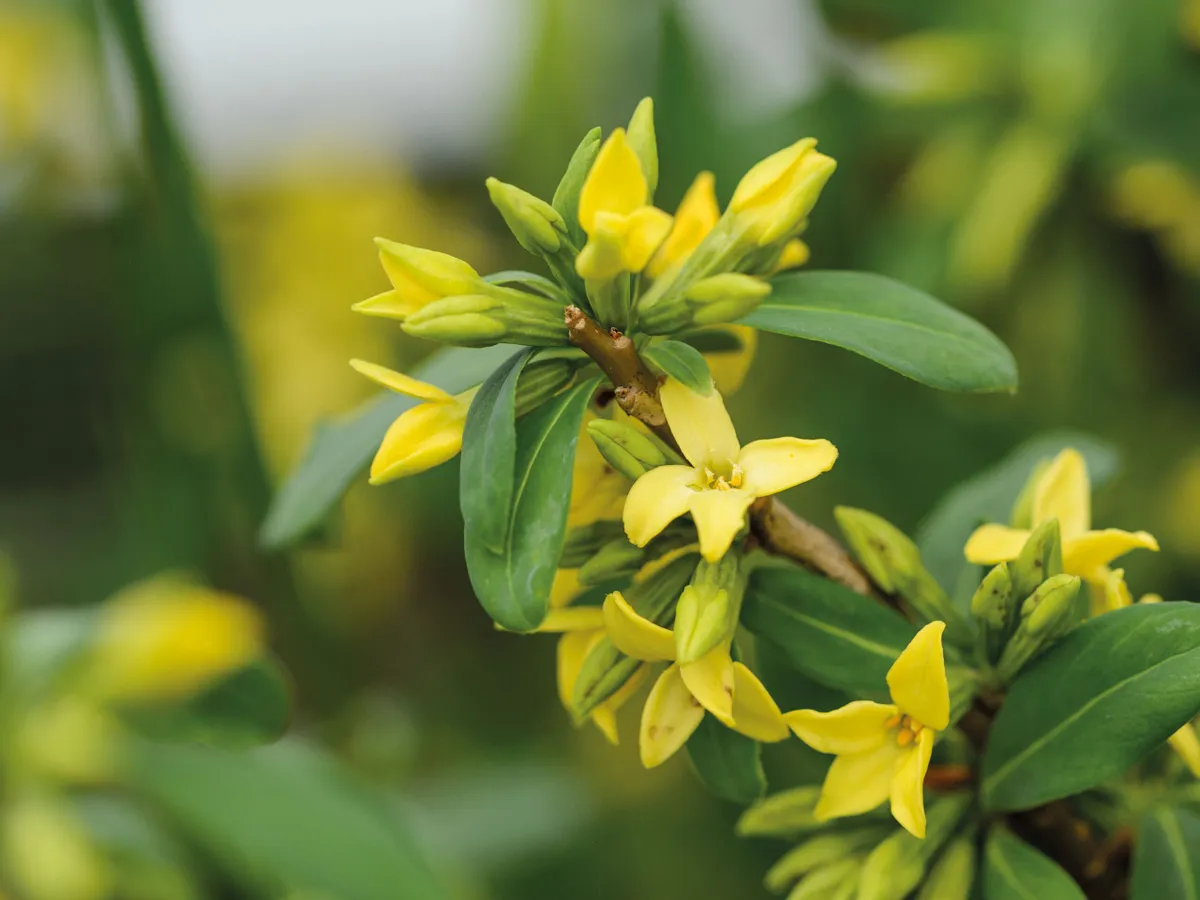
A low-growing daphne that will cover itself in scented yellow flowers for months in late winter. The scent is elusive as I get very little but for others it is glorious. I cannot pretend it is the easiest daphne to grow, needing, as all daphnes do, a well-drained soil but in part shade. I grow mine in a bed under cover but open on all sides. Unusually, it goes dormant after flowering, dropping its leaves through the summer, before making new growth in the autumn. Beware slugs eating the new flowerbuds at this time. KW
Height 60cm.
Origin Northern Japan and eastern Russia.
Conditions Well-drained soil; part shade.
Hardiness RHS H5, USDA 7a-9b.
Season of interest Second half of winter.
Pieris formosa var. forrestii ‘Jermyns’
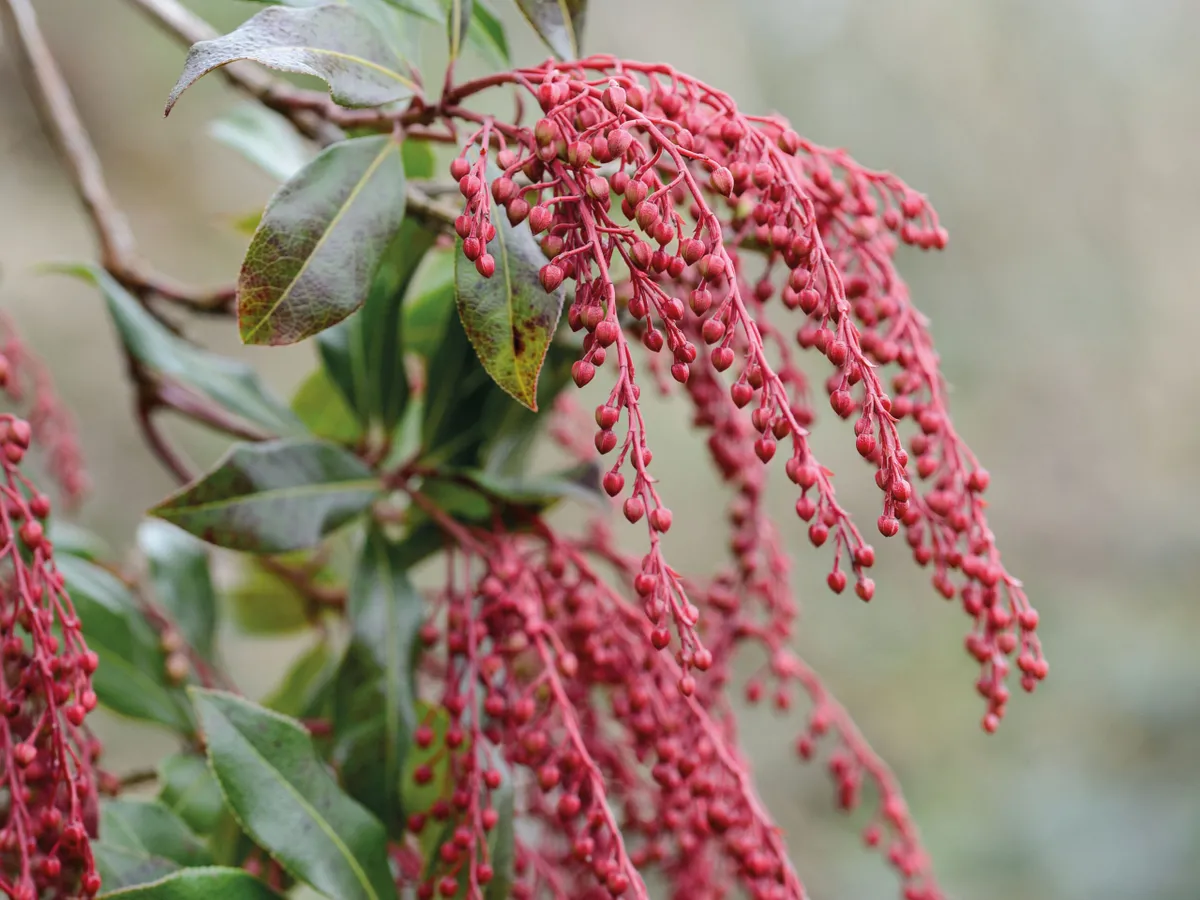
One of my top ten shrubs for winter effect, although you’ll need a non-limey soil to grow it. Its red flower buds are very good for flower arranging, and the colder the weather the more intense the red colour of these buds becomes. From these, white, heather-like, bell-shaped flowers open in spring, and these are best removed after flowering to improve flowering the following year. If you forget it may flower only every other year. Striking purple-red young foliage will follow if frosts permit. KW
Height Up to 3m.
Origin Garden selection (species native to southwest Asia and Himalayas).
Conditions Ericaceous soil; sun or part shade.
Hardiness RHS H4, USDA 5a-8b.
Season of interest Spring/early summer for new foliage; all winter for flowerbuds.
Erythronium caucasicum
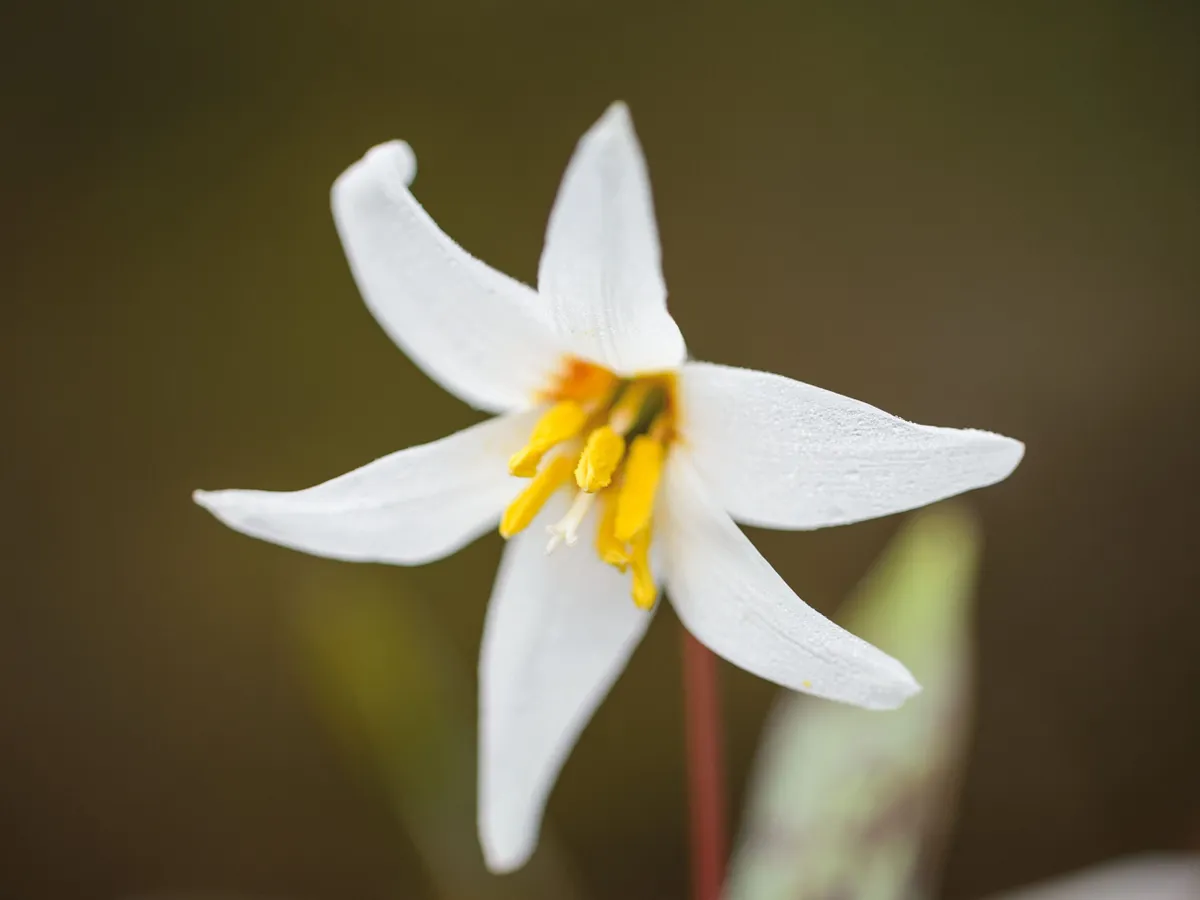
This species always wins the race to be the first erythronium in flower, but as you might expect from a plant that produces flowers so early, it is easily spoilt by bad weather. Strong winds are its main enemy so it is best positioned in a sheltered, semi-shady spot. Given a spell of good weather this species is a joy – a little like a refined Erythronium dens-canis but with superb mottled leaves and yellow, rather than blue, anthers. Very slow to increase with me, seed offering the best option, so grow under cover or protect the plants with a cloche if you want seed. KW
Height 15cm in flower.
Origin Western and central Caucasus.
Conditions Woodsy soil; part shade.
Hardiness RHS H6, USDA 3a-9b.
Season of interest Late winter to very early spring.
Erythroniums: how to care for, plant and the best garden erythroniums
Narcissus ‘Spoirot’
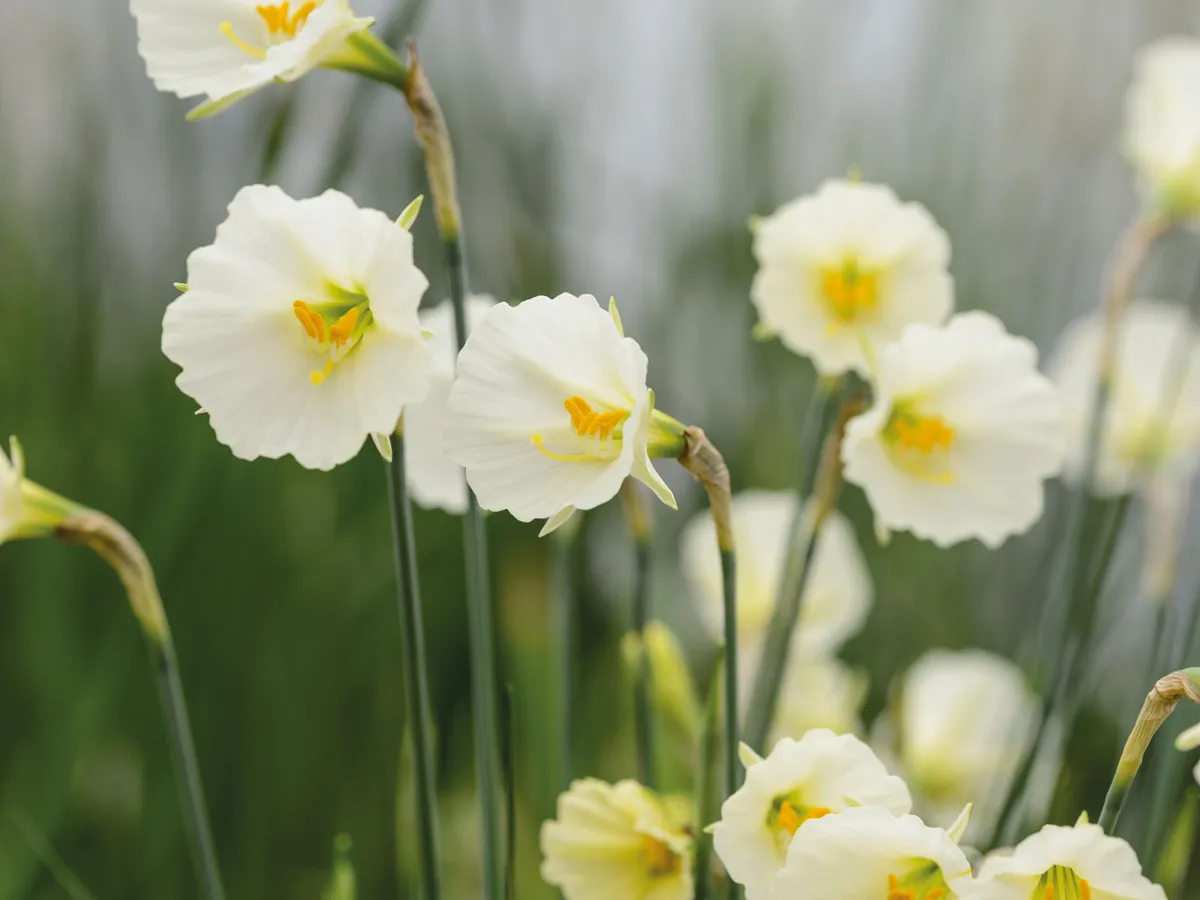
A beautiful hoop-petticoat daffodil that increases by bulb division satisfyingly quickly. I have not noticed it setting seed so it stays where you plant it. This cultivar is rather like a vigorous, larger flowered version of the similar Narcissus bulbocodium var. citrinus, and both have thin, sedge-like leaves. The latter species would definitely make my top ten spring bulbs because it will seed itself around, creating drifts of lemon-yellow flowers that will emerge through anything low-growing enough to allow them to do so, including thin grass. A wonderful naturalising bulb. KW
Height 20cm in flower.
Origin Garden origin (species from southern Europe).
Conditions Most soils; sun.
Hardiness RHS H6, USDA 6a-9b.
Season of interest Early spring.
Narcissi: how to plant and care for narcissi
Primula ‘Gigha’
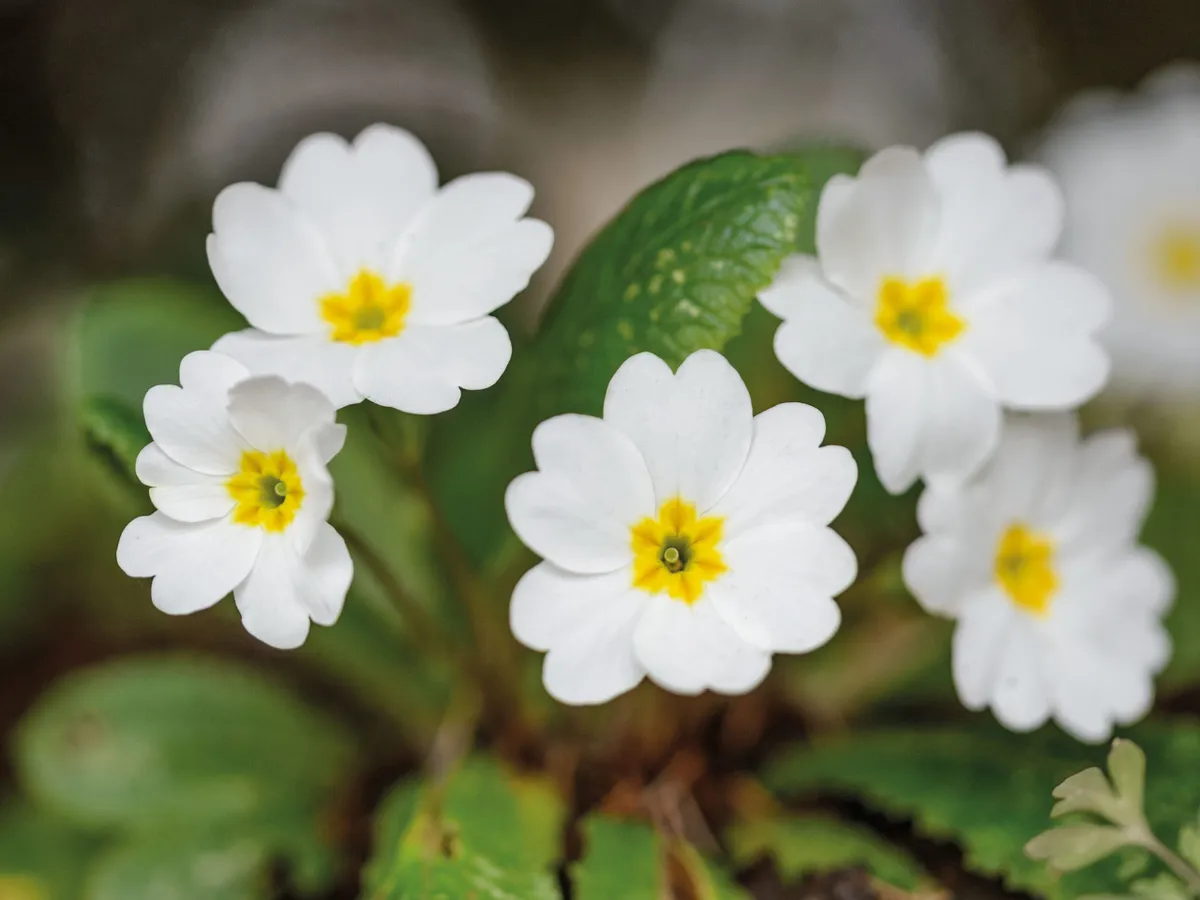
In effect a pure-white primrose with a yellow eye that will flower for months giving pools of white in the woodland garden. My experience with primrose cultivars (I have grown very many over the years) is that quite a few of them fade away without you really realising they have disappeared. One of the joys of ‘Gigha’ is its willingness to stay alive without regular division or undue pampering. It can self-seed but it hasn’t done so with me. Like all woodlanders though it will respond favourably if annually mulched and fed. KW
Height 15cm.
Origin Thought to come from the Isle of Gigha off the coast of Scotland.
Conditions Moist but well-drained soil; full sun to part shade.
Hardiness RHS H7, USDA 3a-9b.
Season of interest Late winter to spring.
Cardamine quinquefolia
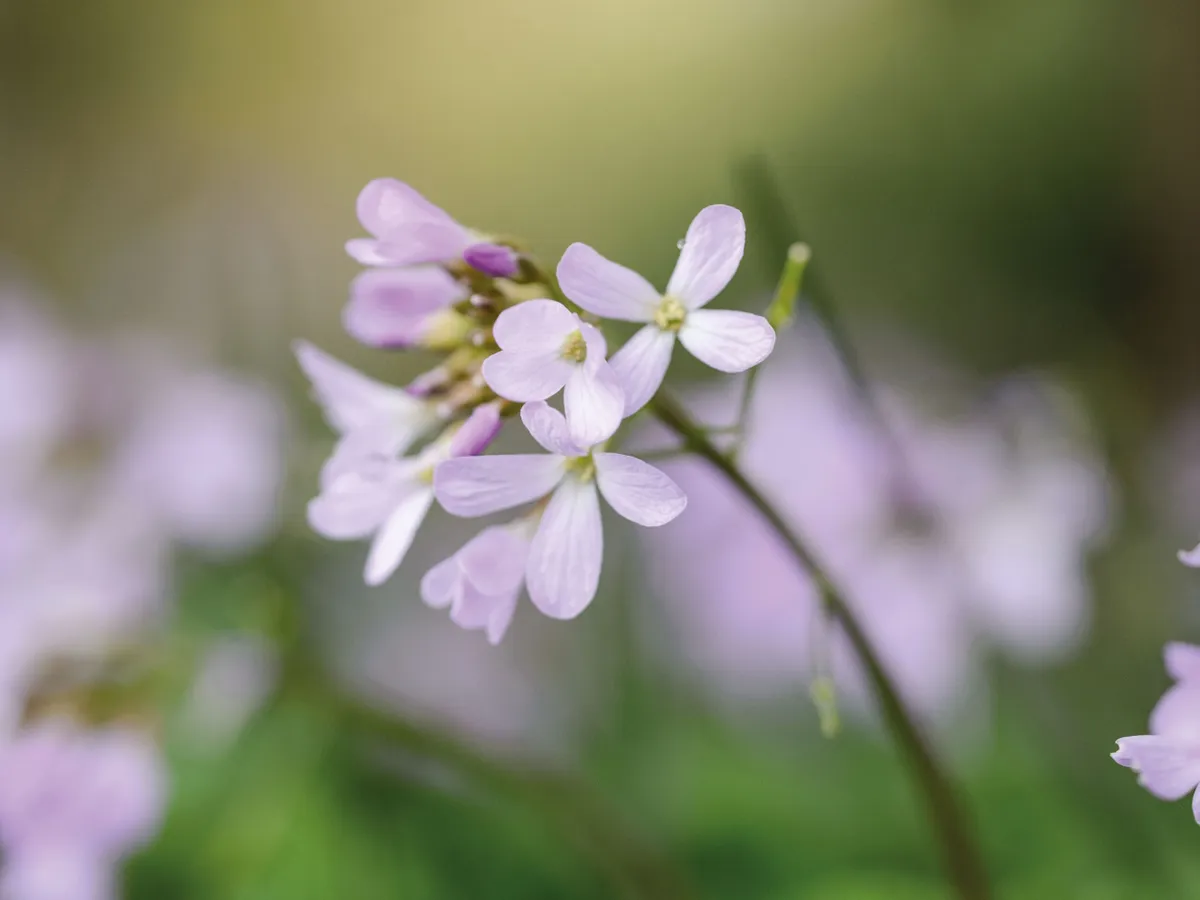
Known as the five-leaved cuckoo flower, this is a flower that has many obvious similarities to our native Cardamine pratensis, but the colour is stronger in this species and it is easily the first of these perennial types to flower, being a real harbinger of early spring. The five-lobed foliage – hence its name – which comes after the flowers is handsome and makes a nice carpet for several months until it dies down in the summer. It will create quite a dense patch and will spread when happy. Grows in shade of all sorts but you will find that it will flower much better if you give it an annual mulch to feed it. KW
Height 25cm in flower.
Origin From Romania to Iran.
Conditions Most soils; full or half shade.
Hardiness RHS H6, USDA 6a-8b.
Season of interest Early spring for flowers.
